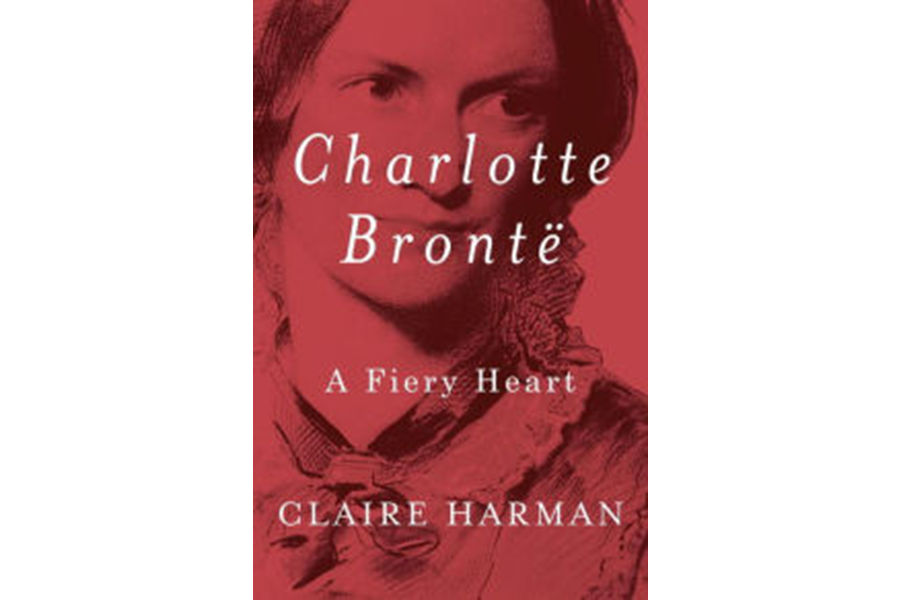'Charlotte Brontë' is an irresistible biography of 'Jane Eyre' and its author
Loading...
The popularity of "Jane Eyre" and mystery surrounding the identity of its author – whose pseudonym was the gender-ambiguous “Currer Bell” – created a sensation in Victorian England when it was published in 1847. The novel still resonates today, testifying to the power of its protagonist’s voice, which seethes with frustrated desire, and indignation at the social and economic injustices faced by girls and women. Virginia Woolf criticized these qualities as failings – Brontë’s own grievances disrupting her writing – but in fact, they are what give "Jane Eyre" its force. Brontë’s publisher famously read the book in one sitting, canceling a friend’s visit and impatiently dismissing the servant who interrupted to bring his lunch.
Brontë’s life bore little resemblance to Jane’s, but was in its own way as gothic, providing fuel for her novels. Literary biographer Claire Harman’s retelling of those events in Charlotte Brontë: A Fiery Heart, published to coincide with the bicentennial of Brontë’s birth, is an irresistible read even for those familiar with her story.
Charlotte’s isolated youth gave her material to draw from and space to hone her craft. The six Brontë children ranged from one to seven when their mother Maria died, leaving them to the care of a remote father (his evolution from Patrick Brunty, son of an Irish farmhand, to Reverend Brontë is where Harman’s story begins). Within a few years, Charlotte’s older sisters died as well, having contracted tuberculosis at the Cowan Bridge school, which Charlotte later fictionalized, lambasting it for its harsh religious doctrine and unsanitary conditions.
Left to themselves, the remaining siblings – Charlotte, Branwell, Emily, and Anne – did chores and studies, took walks on the moors Emily would immortalize in "Wuthering Heights," and wrote poetry and fiction.
Harman emphasizes the parallels between Charlotte and Branwell, who were just a year apart, by juxtaposing episodes of their youth. The two collaborated on stories set in the fantastical Angria, and both wrote to renown poets for encouragement – Southey’s response taught Charlotte a lifelong lesson in adopting a male persona so as to be judged on her writing, not her gender. Both experimented with opium (at least, Harman makes a convincing case that Charlotte did) and harbored an obsessive unrequited love for someone married. Branwell’s privilege as the only son worked against him, however. His father’s homeschooling afforded him knowledge of the classics, but deprived him of peers, and his freedom to travel and socialize (which Charlotte desperately longed for) led to opium addiction.
Charlotte, by contrast, learned to navigate socially through her schooling, where she made lifelong friends, despite her oddities and social unease. Even her unreciprocated love for her married teacher, Constantin Heger, and later for the dashing young editor, George Smith, she transmuted successfully into fiction. And these relationships, however painful, had their rewards: the former gave her an intellectual mentorship that was crucial to her growth as a writer, and the latter introduced her to London’s social and cultural life.
Harman draws our attention to the radical experimentation in Charlotte’s writing throughout her life, including a postmodern moment in her juvenilia when the hero wonders if he is “the mere idea of some other creatures brain.” It’s a stylistic move worthy of Vonnegut – and Charlotte was just 14. "Jane Eyre," Harman notes, was the first novel ever written in the first-person voice of a child.
Equally new was Brontë’s expression of indignation over the exploitation of children, a subject just being explored by Dickens – Harman notes that the two authors “marked a sea-change in how … writers showed adult psychology being forged from childhood experience.”
"Jane Eyre" was radical, too, in questioning social expectations placed on women. Jane’s very act of falling in love with Rochester before he declared his affection was a rebellion against the social order. For these reasons the novel was accused of being “half savage & half freethinking,” “anti-Christian” in its “tone of ungodly discontent,” and its heroine a “hater.” This passionate tone generated criticism for "Villette," as well, though it inspired admiration in a yet-to-be-published George Eliot.
By the time Charlotte wrote "Villette," her three remaining siblings had died within the space of a year, and the novelist was haunted by these losses. Charlotte went on to have a happy, albeit short-lived, marriage, due to a condition related to pregnancy that led to an excruciating death.
Her final visit to London had taken her to the Stock Exchange, Bedlam asylum, and the Foundling Hospital, signaling an interest in tackling broader social issues in her future novels than the narrowness of her life had previously allowed her to. It’s a loss to us all that she wasn’t able to do so.






